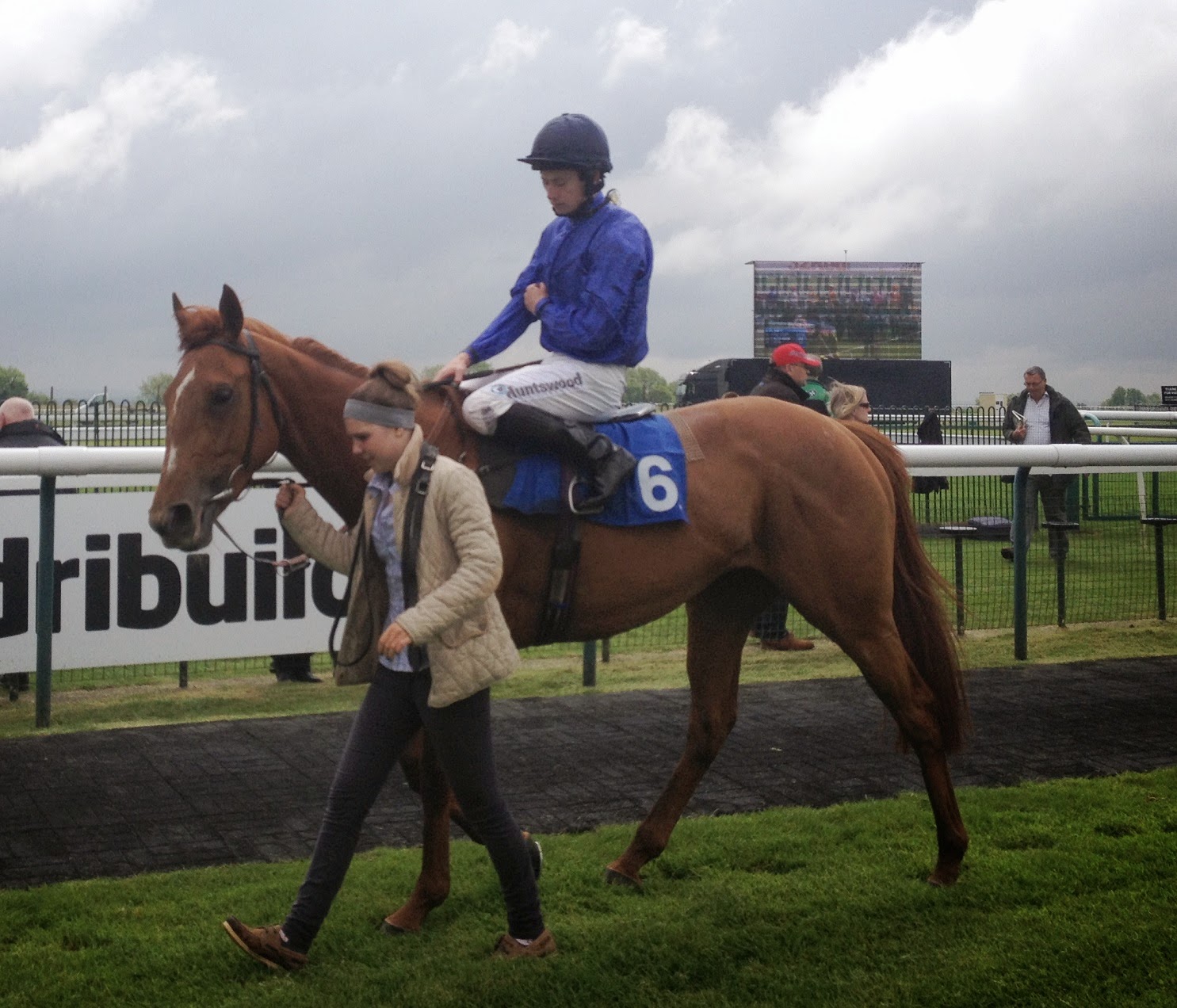That was pleasing, as was the fact that she was (well) ridden by Oisin Murphy. It's easy to forget that it's only a year since he had his first race-ride, so well does he ride and so well does he conduct himself. Funnily enough, I'd bumped into his uncle, this stable's former first-choice jumps jockey Jim Culloty, at Doncaster Sale the previous week and we were talking about him, and I'd said to Jim that he hadn't ridden for me yet, but that I was keen to use him whenever the opportunity arose - so it was very good that such an opportunity arose so soon afterwards. Oisin rode a horse (Arubeel) part-owned by my friends Joff Dumas and Patrick Stock when he was in Australia during the winter, and I'm pleased that he's now had a ride for this stable too.
So we can look forward to Indira's next run (over a bit farther) with relish - and I hope that we can look forward to the future runs of a few more of this stable's inmates with relish too. Russian Link is still several weeks off being ready to run (she hasn't galloped this year) but she had her first jumping lesson today and that went very well, as three of this paragraph's photographs suggest. Joe Akehurst, a very good rider, rode her, and it was a pleasure to watch them jumping - and all the more so when I (having been thinking that this was the first time she'd ever jumped) was reminded afterwards that I'd jumped her one time last autumn and she'd jumped very, very badly. Thinking about it, it's easy to understand why I'd erased that session from my mind!
Looking a bit farther afield than the limits of our own goldfish bowl, and moving instead to racing's broader goldfish bowl, we've had over the past week discussion about the merits or otherwise of irrigation of racecourses. At this time of year, it's easy to forget how very hard tracks can get in periods of prolonged warm/hot and dry weather, and that when the tracks get hard there is only a small minority of horses suited to them; and that an awful lot of horses jar up (and run below form) if asked to race on them. Bearing that in mind, it's very, very hard to argue that watering tracks is a bad thing.
However, the complicating factor is that racecourses nowadays stage many more racedays per year than used to be the case. It's easy to forget that in living memory Ascot and Goodwood only raced once a year, and that even when I first started following racing in the '70s there were still only three meetings a year at, to name but three racecourses, Goodwood, Epsom and Chester. The latter is one of my particular betes noirs because any time I've been there in recent years the turf has been in lamentable condition, which strangely hasn't stopped its groundsmen from winning an award recently; I suppose that the reasoning behind this is that they have to work in such unfavourable cirumstances in trying to produce satisfactory turf on a narrow racecourse which has about three times the amount of fixtures one would consider ideal.
The solution? Well, obvious, isn't it? Go back to the days when each racecourse raced only on a single-figure number of days per year (and, on average, had fewer races per year). Piece of cake - as long as one doesn't get mown down by the flying pigs when planning this fixture list. In the modern commercial world, there is no chance whatsoever of this happening - so thank God for moveable plastic running rails, which do at least serve the purpose of spreading the wear and tear across the course a bit. So we're left to muse over there being no right answers to the question of whether or not to water in dry periods.
On a more straightforward note, I can't close this chapter without highlighting how happy I've been to have a hedgehog visitor in the stable over the past couple of days. And some warm, dry weather with a bit of sun too.


.jpg)
.jpg)



No comments:
Post a Comment